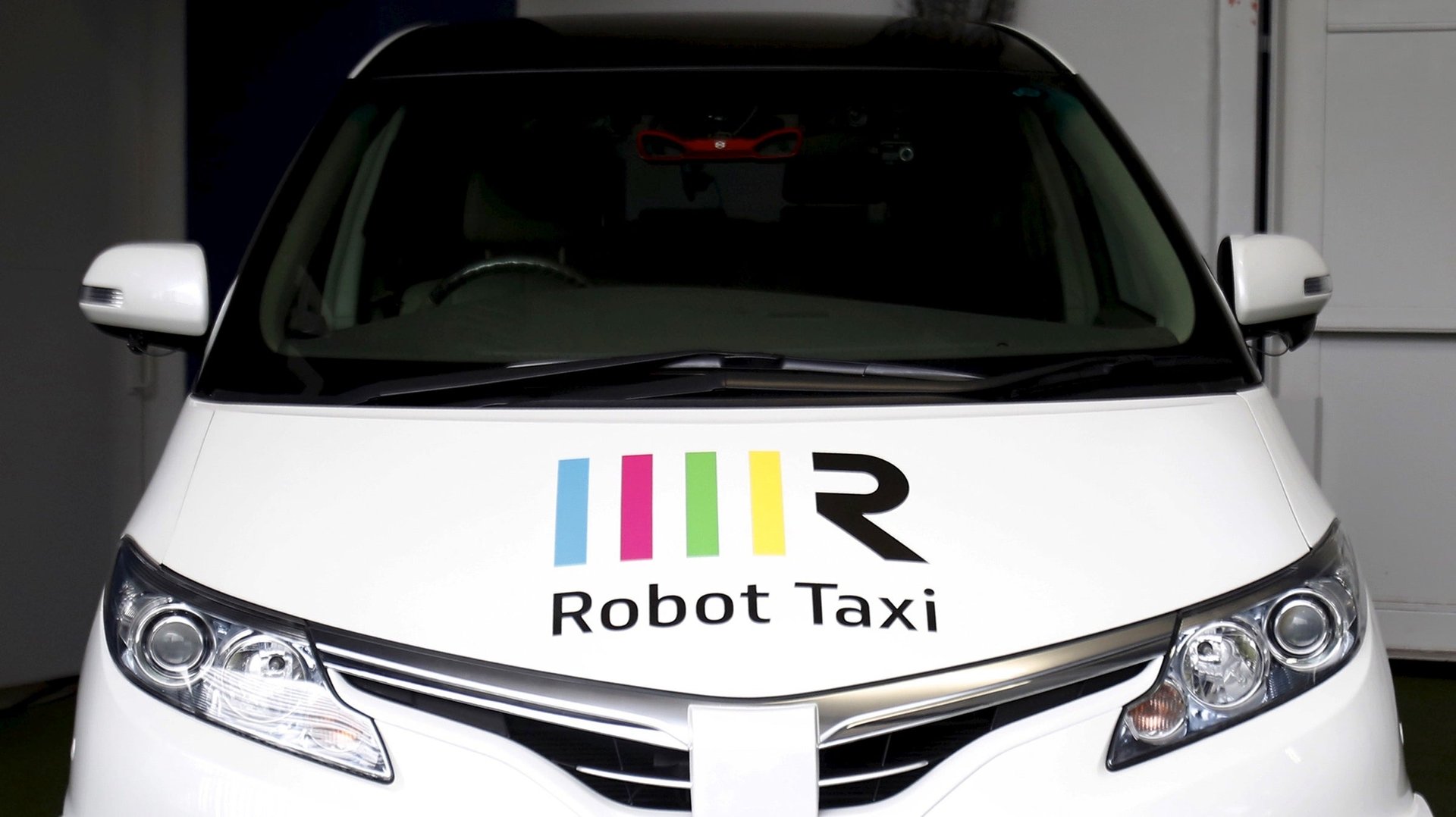Japan is experimenting with driverless, robot taxis
Next year, about 50 people in Japan will start using taxis to get between their homes and the local grocery store. The twist? The cabs will have no drivers (paywall).


Next year, about 50 people in Japan will start using taxis to get between their homes and the local grocery store. The twist? The cabs will have no drivers (paywall).
A test run for a service scheduled for a broader Japan launch in 2020, the experiment will take place in the Kanagawa prefecture, south of Tokyo. The company behind it, Robot Taxi, is a joint venture between mobile-internet firm DeNA and vehicle-technology developer ZMP. The two announced their intentions in May, saying they would roll out self-driving taxis and buses (paywall).
Robot Taxi’s system incorporates GPS, millimeter-wave radar, stereo vision cameras, and image analysis to get around. During the trial, the cabs will drive a distance of about 3 km (almost two miles), partly on major avenues. Crew members will be onboard in case they are needed to avoid accidents.
The company announced the trial yesterday (Oct. 1) at a ceremony in Yokohama, the prefecture’s capital. The attendees included Shinjiro Koizumi, son of former prime minister Junichiro Koizumi and a vice minister in the current government. “There are a lot of people who say it’s impossible,” he said of self-driving cars, “but I think this will happen faster than people expect.”
Indeed some have argued (paywall) that when it comes to self-driving cars, Japan has been asleep at the wheel—and risks ceding the market to foreign rivals. Audi, Mercedes-Benz, Ford, and Tesla are all developing autonomous driving features, and Google has been testing self-driving cars on US roads this year.
Toyota, for its part, is investing $50 million with Stanford and MIT on autonomous-vehicle research, and yesterday it announced an upcoming safety device designed to send and receive information between vehicles and roadway infrastructure. Since it could theoretically detect that a driver was not responding to a red light and reduce speed accordingly, it offers a kind of partially autonomous driving.